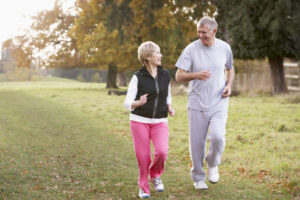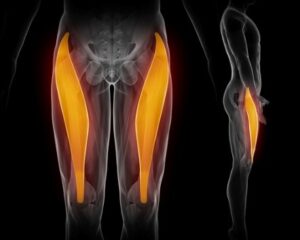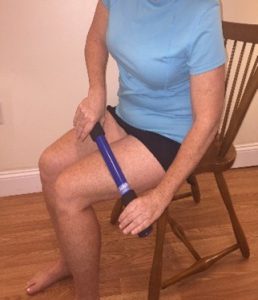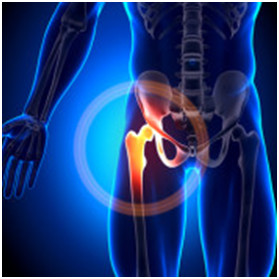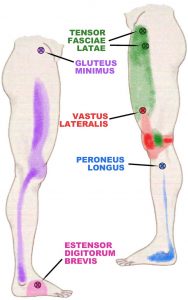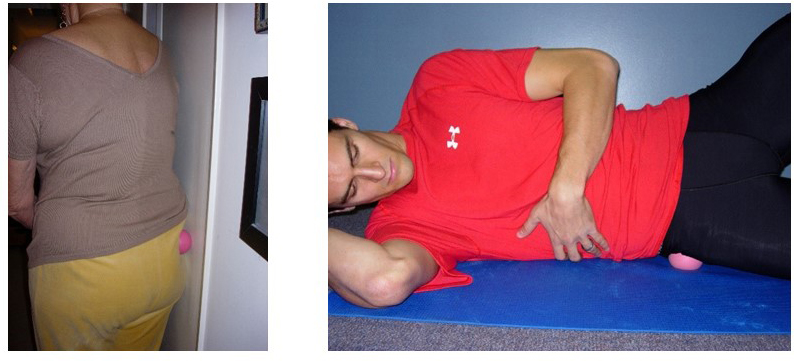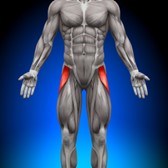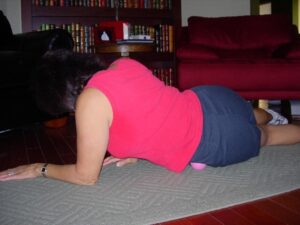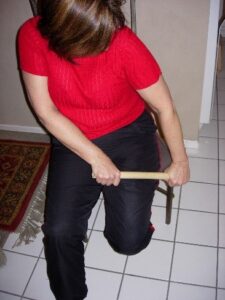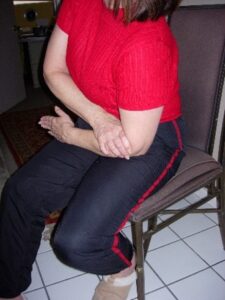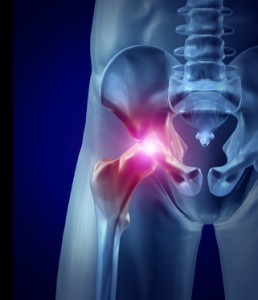Treating Your Popliteus Muscle Safely
Author: Julie Donnelly, LMT – The Pain Relief Expert
Editor: Dr. Steve Chaney
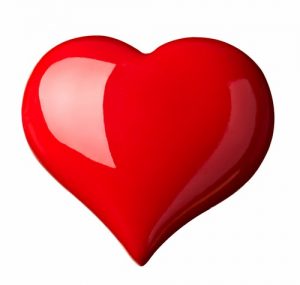 While February is the shortest month of the year, to our northern family and friends it is the longest, seemingly endless, month because it seems like winter is never going to go away.
While February is the shortest month of the year, to our northern family and friends it is the longest, seemingly endless, month because it seems like winter is never going to go away.
Where I live in Sarasota Florida, winter brings us near-perfect days and cooler nights. It’s my favorite time of year. And of course, we all celebrate the holiday of love – Valentine’s Day!
Just a bit of trivia: In 1868, Richard Cadbury released the first Valentine’s Day box of chocolates, followed in 1902 with the first Valentine hearts from the New England Confectionery Company. In the 1840s, Esther A. Howland created the first commercial Valentine’s Day cards in the United States. Hallmark first offered Valentine’s Day cards in 1913 and began producing them in 1916. (Thanks to Wikipedia for all this interesting info).
I was reviewing last year as I was deciding on a topic for this month. We discussed:
*Heel pain
*Groin pain
*Low back pain
*Restless leg
*Foot pain
*We spent two months discussing various causes of headaches,
*And now we are in 2024, this will be the second month explaining some of the many causes of knee pain.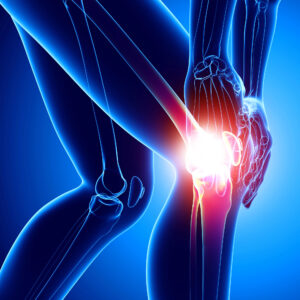
In each of these I showed, or explained to you, how to do a simple self-treatment that can help to relieve the pain. Each of the treatments are in my books, and many people have decided to just order one of the books, so they had the full treatment protocol for aches and pains from your head to your foot.
I’ve done self-treatment videos, and if you have come to the office, you know that I teach you how to do specific self-treatments that relate to your personal area of pain.
Before I change the way I do things, let’s finish off knee pain by talking about a little muscle that causes pain deep inside your knee joint. It’s a muscle called popliteus.
Your Popliteus Muscle And Knee Pain
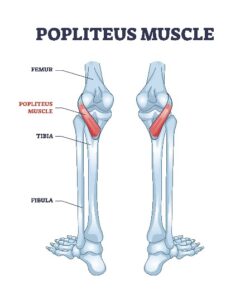 The popliteus is a small muscle that causes a LOT of deep-knee pain. It is located at the back of your knee joint. It attaches to the bone in your lower leg, crosses the joint, and inserts into your thigh bone. You can get a good look at it and read all about it by going to https://en.wikipedia.org/wiki/Popliteus_muscle.
The popliteus is a small muscle that causes a LOT of deep-knee pain. It is located at the back of your knee joint. It attaches to the bone in your lower leg, crosses the joint, and inserts into your thigh bone. You can get a good look at it and read all about it by going to https://en.wikipedia.org/wiki/Popliteus_muscle.
Because of the location of the origination and insertion points, when it contracts normally you bend your knee. In fact, its nickname is “the key that unlocks the knee.”
The muscle shortens and you bend your knee so you can sit down. However, you are sitting for a while and the muscle experiences muscle memory, so the muscle now “thinks” it is supposed to be shorter.
You then try to straighten your leg and stand up. However, the muscle is too short to make that movement, and it pulls hard on your knee joint. Since the muscle is so deep, you feel the pain deep inside the joint, and it may feel like a knife cutting into the back of your knee.
Treatment…
Fortunately, all you need to do is press your fingertips into the muscle, hold it for about 15 seconds, and then s-l-o-w-l-y straighten your leg. The pressure will force toxins out of the fibers, and straightening your leg will stretch the fibers.
Prevention…
When you are sitting for extended periods of time, simply stretch out your legs every 10 minutes or so. That will stretch the muscle before it has the chance for muscle memory to shorten the fibers.
What’s New For This Year?
This year I’m going to continue explaining why various muscles cause pain from the top of your head to your feet. The difference will be that I’ve already posted most of the self-treatments, and if you have one of my books, you definitely have all of the self-treatments.
Plus, there’s something exciting happening in 2024!
I’ve been working with my webmaster to start a yearly membership program where people can join and get:
*24/7 lifetime online access to my eBook: The Pain-Free Athlete
*a Perfect Ball (free shipping in the USA only),
*two 15 minute Zoom consultations where we can isolate the member’s pain situation, and
*access to several members-only group Zoom meetings over the course of the year.
This membership program will be renewable each year (sans the book and ball) so members will be able to quickly discover the source of their pain before it becomes an issue.
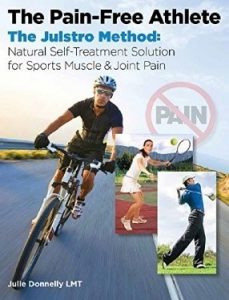 This book has been called “the bible” by athletes because they could find all their answers in it.
This book has been called “the bible” by athletes because they could find all their answers in it.
You can also have it in your home so you can Stop Pain FAST!
https://julstromethod.com/product/pain-free-athlete-book/
Watch for more new and exciting changes happening in 2024!
Wishing you well,
Julie Donnelly
www.FlexibleAthlete.com
These statements have not been evaluated by the Food and Drug Administration. This information is not intended to diagnose, treat, cure, or prevent any disease.
About The Author
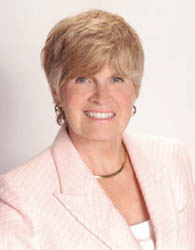 Julie Donnelly has been a licensed massage therapist since 1989, specializing in the treatment of chronic pain and sports injuries. The author of several books including Treat Yourself to Pain-Free Living, The Pain-Free Athlete, and The 15 Minute Back Pain Solution.
Julie Donnelly has been a licensed massage therapist since 1989, specializing in the treatment of chronic pain and sports injuries. The author of several books including Treat Yourself to Pain-Free Living, The Pain-Free Athlete, and The 15 Minute Back Pain Solution.
Julie has also developed a proven self-treatment program for the symptoms of carpal tunnel syndrome.
She has a therapy practice in Sarasota, Florida, and she travels around the USA to teach massage and physical therapists how to do the Julstro Method, and she also teaches self-treatment clinics to anyone interested in taking charge of their own health and flexibility.
She may be reached at her office: 919-886-1861, or through her website: www.FlexibleAthlete.com

